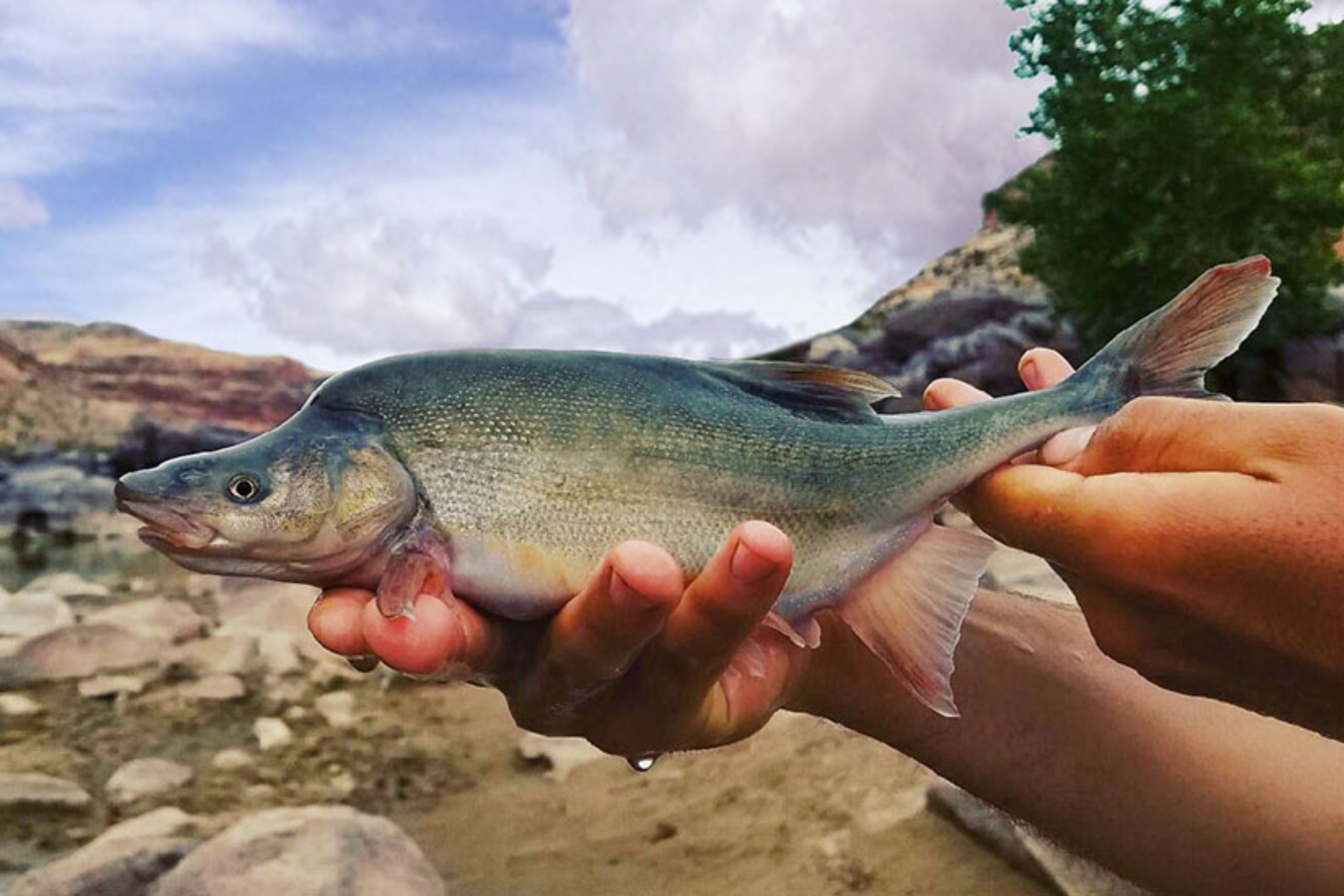Arizona water officials are releasing cold water from Lake Powell to lower water temperatures in the Colorado River and protect the threatened humpback chub fish from an invasive species.
Lake Powell and Lake Mead, the two largest reservoirs in the nation, reached concerningly low water levels in the summer of 2022 after years of drought and excessive water usage. Two abnormally wet winters have helped supplement the reservoirs. As of Wednesday, Lake Powell water levels were at 3,587 feet, nearly 50 feet higher than in 2022. Lake Mead was at 1,062 feet, 20 feet higher than in 2022.
However, warmer temperatures and falling water levels have contributed to higher water temperatures in Lake Powell and the Colorado River. The river’s higher water temperatures have disrupted some of the fish and wildlife in the area.
US Fish and Wildlife Service
For example, observed daily water temperatures have now been documented as warmer than 60 degrees Fahrenheit in the river. Smallmouth bass living in the warmer parts of Lake Powell are now more likely to pass through the dam and spawn in the Colorado River.
“If left unchecked, they could continue to expand their population,” a U.S. Bureau of Reclamation (BOR) press release said. “Smallmouth bass are known to prey on native fish species in the Grand Canyon that are protected by the Endangered Species Act.”
Releasing cool water from the deeper parts of Lake Powell will lower the river’s temperature, which is necessary to preserve the humpback chub, a threatened fish that thrives in the river. The BOR’s cold water releases began at Glen Canyon Dam on Tuesday.
“The most healthy and vibrant populations of humpback chub are found in the stretch of the Colorado River downstream of Glen Canyon Dam that runs through the Grand Canyon,” the BOR’s Upper Colorado River Basin regional director, Wayne Pullan, said in the press release.
“We have a great interest and commitment to preserving our progress in recovering the humpback chub and protecting all native fish species within the Grand Canyon,” he said. “And this summer, by using these cooler flows, we have our best operational chance to achieve these goals.”
Newsweek reached out to the BOR by email for comment.
Cooler temperatures are achieved by using what the BOR calls a “cool mix” of water that is released from Lake Powell. This consists of “releasing water from the hydropower penstocks as well as the river outlet works,” according to the press release.
“The river outlet works are approximately 100 feet below the penstocks and can release cooler water downstream,” the release said.
There are five populations of the humpback chub, according to the U.S. Fish and Wildlife Service (FWS). Four populations live upstream of Lake Powell, with one living downstream of the lake, in the Grand Canyon.
The humpback chub was previously classified as endangered, but it was down-listed by the FWS to threatened status in 2021.
Uncommon Knowledge
Newsweek is committed to challenging conventional wisdom and finding connections in the search for common ground.
Newsweek is committed to challenging conventional wisdom and finding connections in the search for common ground.
